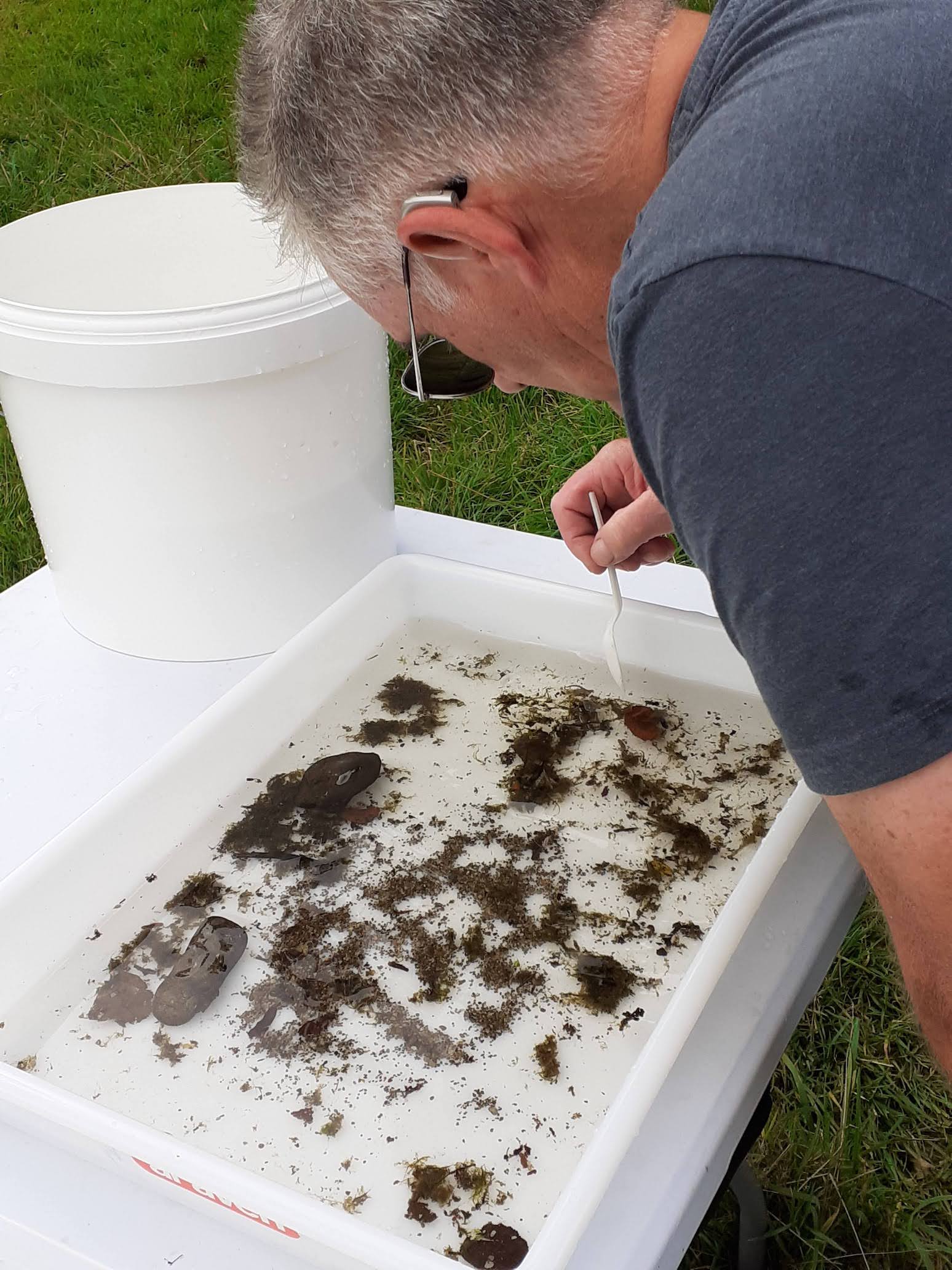
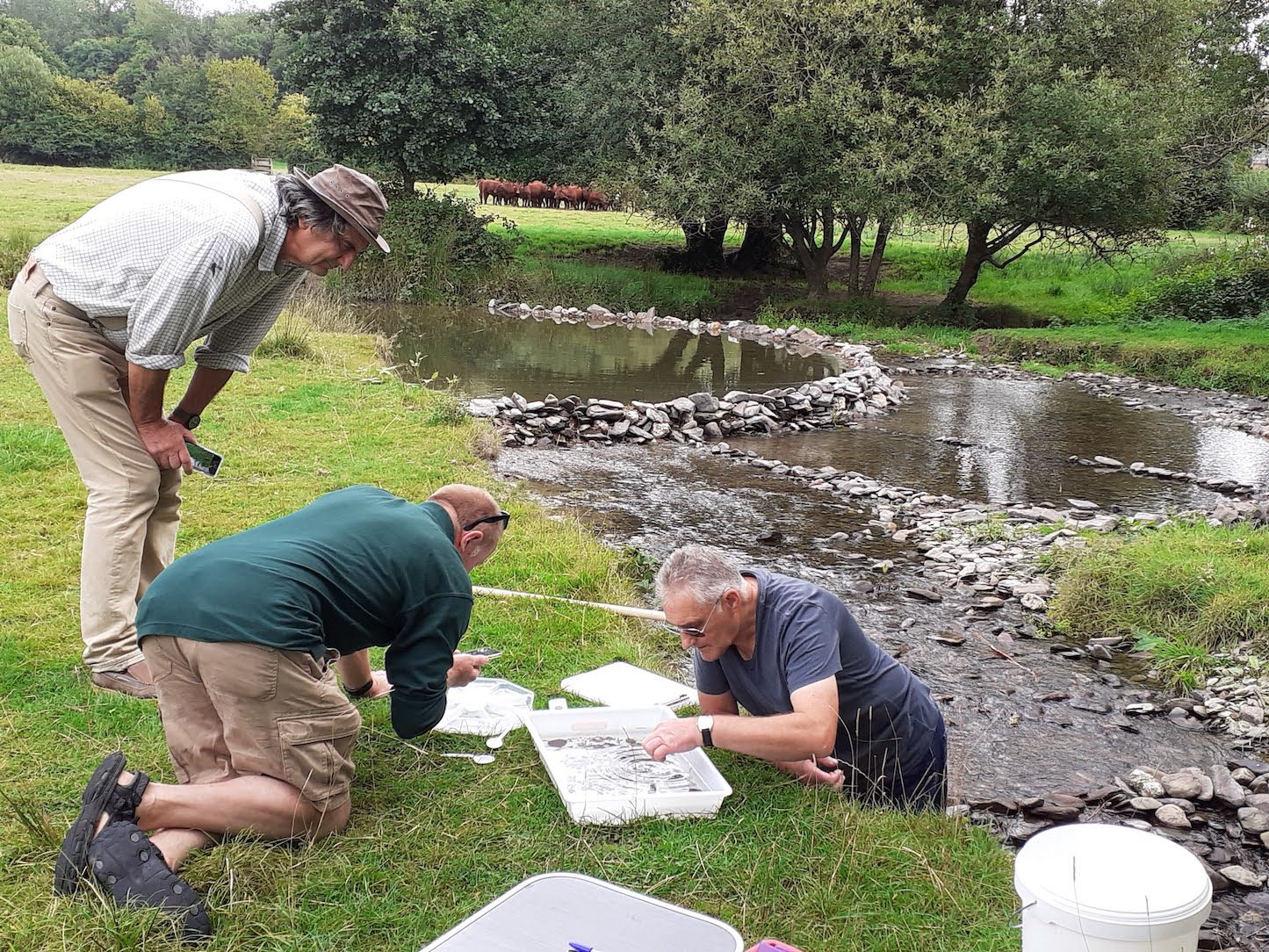
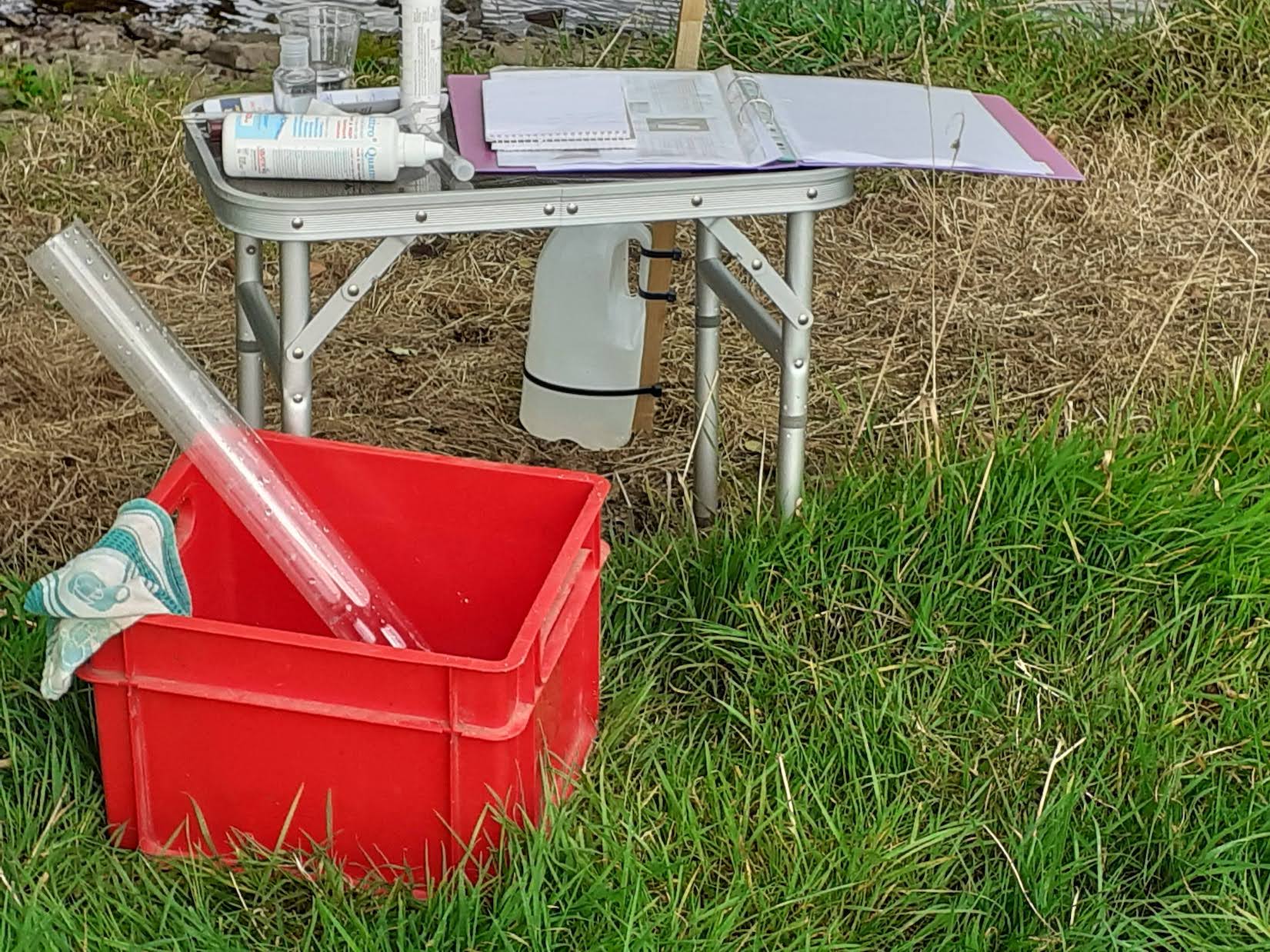
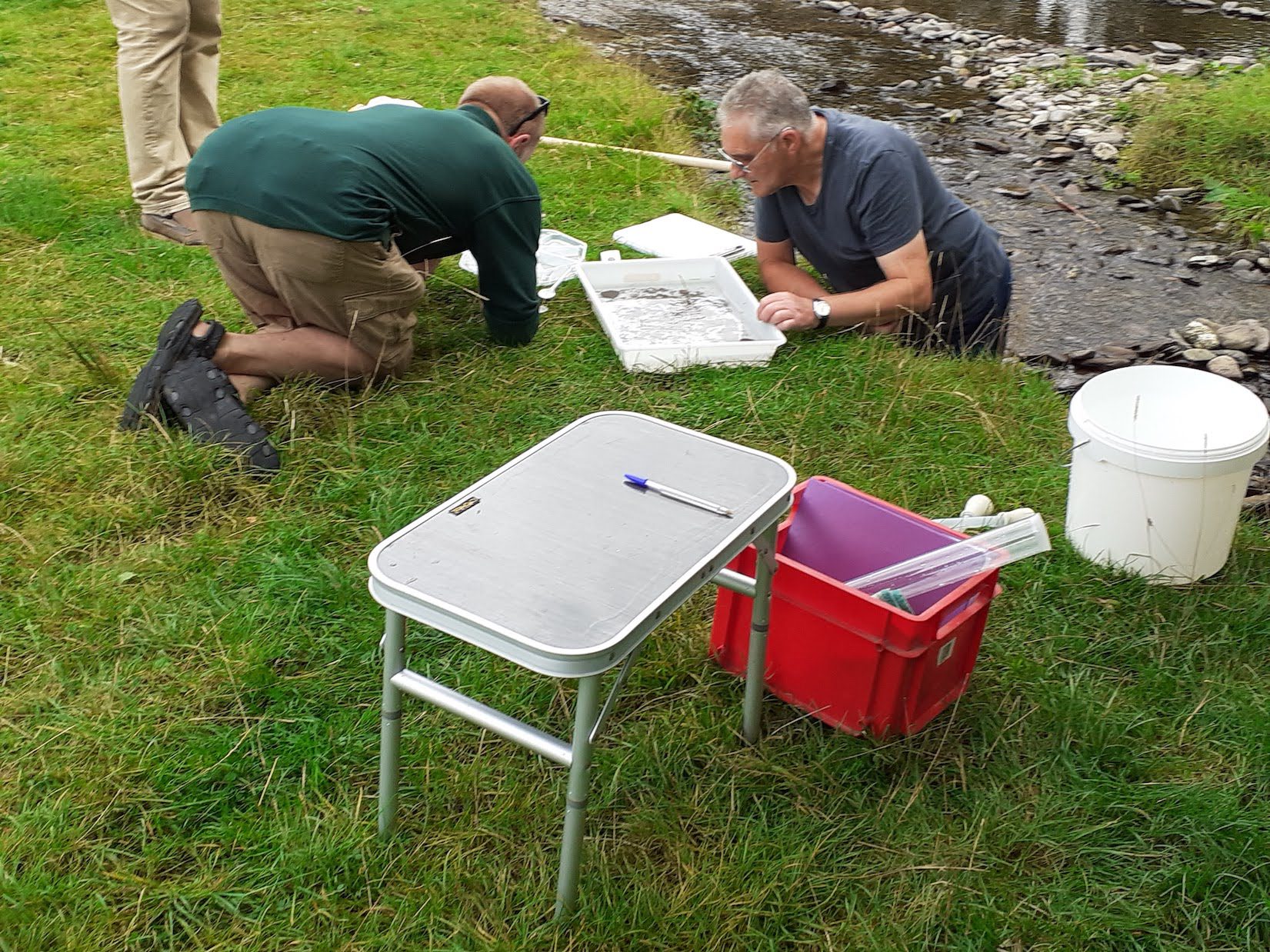
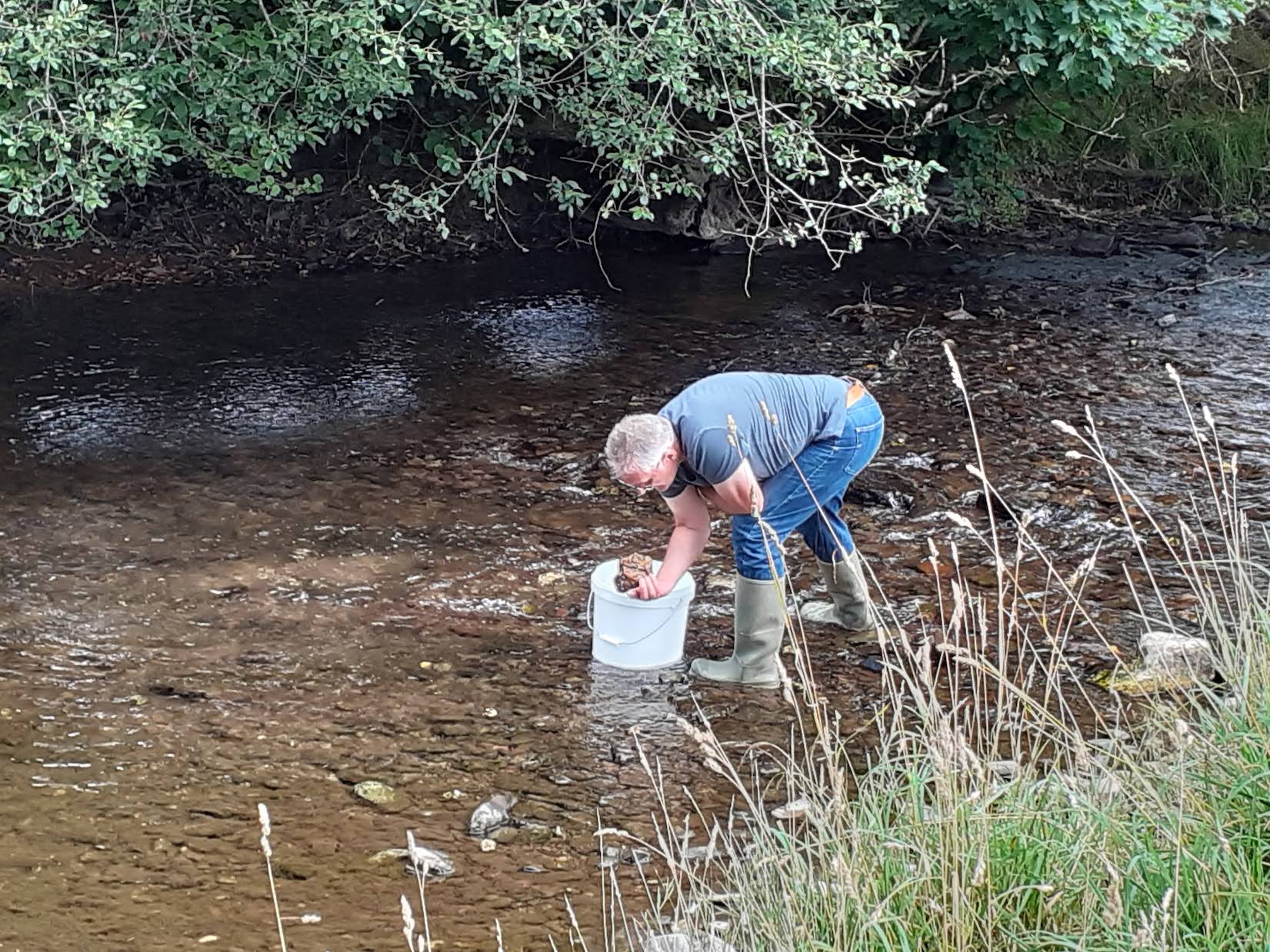





I recently attended the Torridge and Taw River fly Celebration event at Newton St Petrock where we met up with members of the River Fly Monitoring Team. This hands on scheme has produced a wealth of valuable data that can give a valuable insight into the ecological state of our rivers. I have tried to collate some highlights from the data provided and will update when I receive news of forthcoming training events. For more information please visit;- The River Fly Partnership website :- www.riverflies.org
Email from Izzy Moser to those who attended the event.
Dear all,
Thank you for attending the Riverfly Celebration Event on Wednesday evening this week. It was really excellent to finally put some faces to names and there were a huge number of helpful discussions during the meeting, so thank you for this.
I have tried to list some of the main discussions in the notes below, but if I have missed anything, please do let me know and I will add it to the notes before circulating to the wider network.
Notes from Riverfly Taw/Torridge Event 10/01/2018:
1. There were discussions on incident reporting and what types of incidents should be reported to the Environment Agency Hotline. Volunteers were asked to report incidents with photo’s if they weren’t sure to their local Wildlife Trust or Rivers Trust. The Environment Agency Hotline Number is for incident reporting: 0800 80 70 60.
2. Volunteers requested a list of sites that would be high priority for monitoring so that new volunteers can look to take on these sites.
3. Some volunteers expressed interest in occasionally surveying an additional high priority site instead of their usual site if their usual site is consistently achieving good invertebrate numbers. Thank you for this suggestion Geoff.
4. Discussions were had on the spread of sites and whether some volunteers may want to move their site to avoid being too close to an existing site. Volunteers should discuss any concerns with their Riverfly Co-ordinator.
5. Lots of discussions were had on how to get more volunteers involved in the Riverfly programme and how training only once a year is a limiting factor of the project. Discussions were had on whether more people could get trained to run the Riverfly Training Day. Ben Fitch offered to potentially help with training small groups (5-6 volunteers) if the Teign Training Event becomes fully booked.
Actions:
1. Please could everyone send any contact details of volunteers who may be interested in getting trained as a Riverfly Volunteer to Olivia for the River Taw [email protected] or to me for the River Torridge [email protected]. At the moment we are only aware of a small number of people interested in the training events, so for considering the running of future events, we need to know how many people are interested.
2. If you know someone who is interested in being trained as Riverfly trainer please do let me know and perhaps we might be able to look into getting more people trained, although we can’t guarantee anything.
3. If you have any concerns about your site, or would like to register a new site, please contact your Co-ordinator I.e. Olivia for the Taw [email protected] and me for the Torridge.
I have attached the details of the Water Framework Directive status for the River Taw and Torridge classifications. Under the column for ‘status’ it lists whether the catchment is in ‘poor’ or ‘moderate’ status. You can use the filter to also show catchments that are in ‘good’ or ‘high’ status. I have also filtered it so that it shows data from 2013-2016 in the ‘year’ column although you can look at data earlier than this if you want to by changing the filter. This should help you to pinpoint catchments that are higher risk for pollution in the ‘poor’ and ‘moderate’ category. From my knowledge of the River Torridge catchment, I am aware that the following tributaries have water quality issues: Dolton Streams, Iddesleigh Streams, River Mere upper catchment, River Mere lower catchment (already monitored), Whiteleigh Water (already monitored), Pulworthy Brook (already monitored), Dipple Water (already monitored), Bideford Yeo (already monitored) and Waldon (already monitored). Unfortunately I cannot give the same information for the Taw catchment, but hopefully the attached spreadsheet should help pinpoint some of the catchments with issues.
I am away next week so will not respond to any emails, but should be back on the 22nd and can answer any queries then.
Thanks once again for your support. It’s a real privilege to work with people who are passionate about their local rivers.
Best wishes
Izzy
Izzy Moser
Freshwater Pearl Mussel Officer
Northern Devon NIA
Devon Wildlife Trust
There is a need for more volunteers on the Taw system.
Torridge and Taw Riverfly Celebration Event
January 10th 2017 at Owl Barn Studio, Little West Hole, Newton St Petrock, Holsworthy EX22 7LW, from 6:30pm
Riverfly in Devon – Set up of the Torridge and Taw, and the national picture.
Riverfly Environment Agency Update
Torridge and Taw Riverfly Results from 2014 to 2017
North Devon Projects Update including Freshwater Pearl Mussel Project
Izzy Moser,
Devon Wildlife Trust Freshwater Pearl Mussel Project
Ben Fitch,
National Riverfly Co-ordinator
Michael Thomas, Environment Agency
Matt Edworthy, Ex. North Devon Biosphere &
Olivia Cresswell, Westcountry River Trust
Izzy Moser,
Devon Wildlife Trust
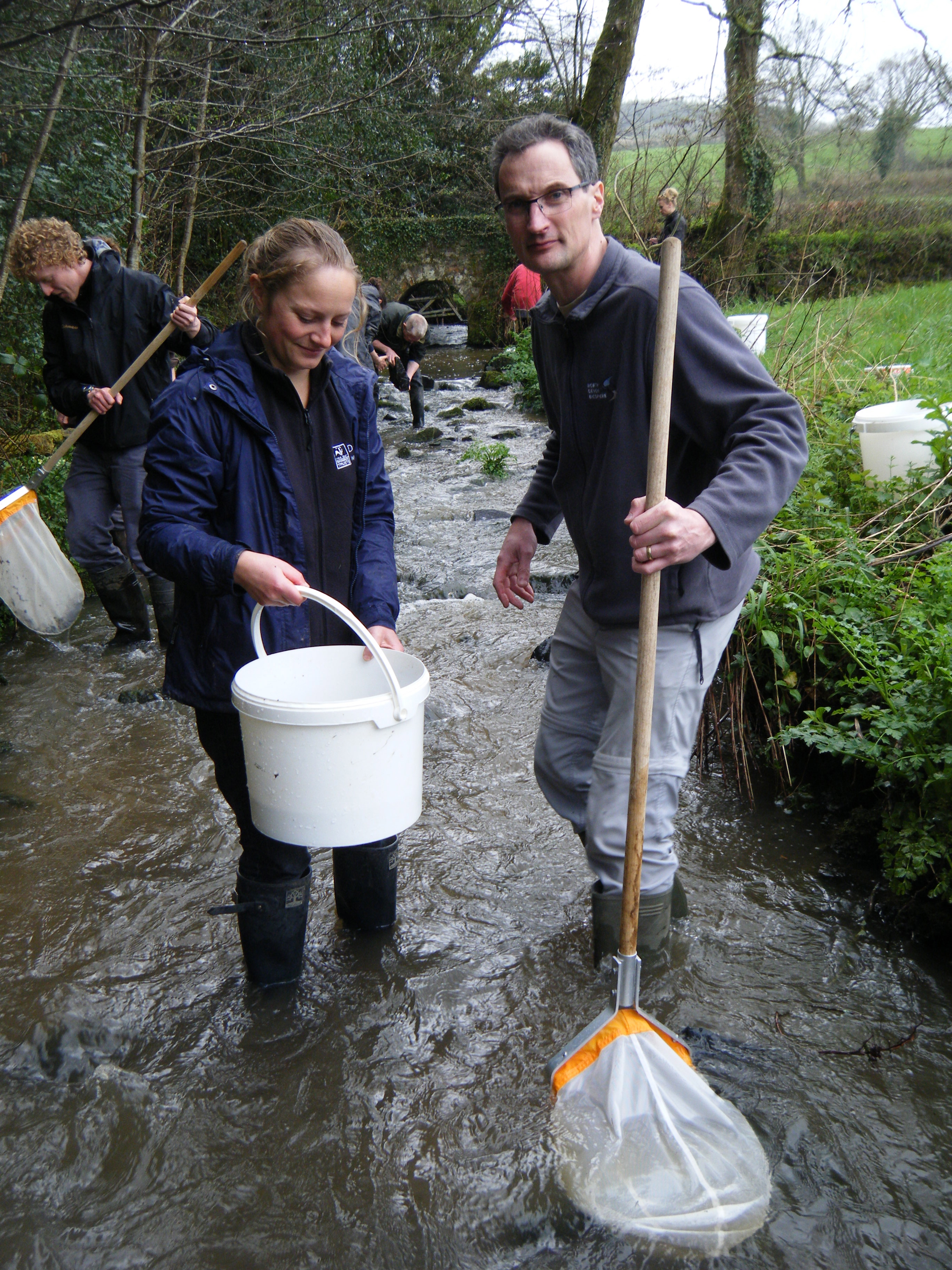
River Torridge and Taw
Izzy Moser and Matt Edworthy, December 2017
Riverfly Report
Acknowledgements
Volunteers The huge number of volunteers who put their time towards monitoring river health every year
Thanks to all past, current and in advance,
future volunteers. We can do nothing without you.
A huge thank you to Matt Edworthy who completed his role as the Taw and Torridge Riverfly Co-ordinator in August. Matt has worked since 2014 to set up Riverfly on the Torridge and unfortunately had to pass it on in 2017. In the four years since it started the project has come on leaps and bounds and there are now also active sites on the River Taw.
Riverfly Report 2017
Background
Riverfly in the Torridge catchment was established in 2014, through a partnership with the North Devon Biosphere and Devon Wildlife Trust. It has been running now for 4 years and is one of the larger Riverfly projects in the UK, with 25 active sites in 2017 and over 40 registered sites. Since 2016, Riverfly volunteers have also been trained to monitor parts of the Taw catchment with 11 volunteers trained and 6 active sites.
The programme is almost entirely volunteer led and consists of a combination of anglers, conservationists and local river enthusiasts. It is designed to help detect pollution incidents through the identification of river invertebrates and the abundance of each group. This gives a score for each site which, if falls below the trigger level set for the site by the Environment Agency, proceeds with further action in the form of a second survey by the Catchment Coordinator or involvement of statutory bodies such as the Environment Agency. As well as detecting pollution events, the surveys can also monitor long-term changes in overall river health and act as a deterrent to polluters.
Riverfly National Review – From the Anglers’ Riverfly Monitoring
Initiative (ARMI) Project Manager
Whilst 2017 has been exceptionally busy for the Riverfly Partnership (RP), with a change of host in April and a strategic refocus of Anglers Riverfly Monitoring Initiative (ARMI) deliverables for this year, the ARMI network also has been in full flow. During the year to date, 54 ARMI training workshops have been delivered to 597 ARMI volunteers and £308,250 of in-kind ARMI coordinator and volunteer time has been committed alongside the rod licence funding which RP receives from the Environment Agency.
ARMI volunteers regularly monitor 1955 sites UK wide and continue to detect pollution incidents, reporting vital information to local statutory body contacts. Across the UK, strongly established ARMI hubs and groups are providing the spine to support Riverfly Plus, and other citizen science, initiatives, such as Extended Riverfly (siltation & low flows) and Outfall Safari (developed and first run by the Citizen Crane project in the Crane Valley catchment).
As always, my continued and sincere thanks to every single ARMI volunteer, coordinator, tutor and partner for your ongoing commitment to protecting and conserving our rivers across the United Kingdom. Special thanks to all rod licence paying anglers and the Environment Agency for providing funding support to ARMI in England, to SEPA for providing strategic support to ARMI in Scotland, to RP host the Freshwater Biological Association and to RP Chair, Steve Brooks.
Riverfly Report 2017
New Volunteers trained in 2016 and 2017 (Taw and Torridge)
In May 2016, nine new volunteers were trained at Hatherleigh Community Centre. For the first time, two volunteers who took part were the beginning of Riverfly in the Taw catchment. They purchased their own equipment and at the end of the season, one site was active (Nymet Rowland) and 3 samples were taken. During 2017, a second training event was held at the Fox and Hounds (Eggesford), with 11 volunteers trained including 9 new Taw volunteers as well as 3 new Torridge volunteers. There are now 6 active sites in the Taw catchment.
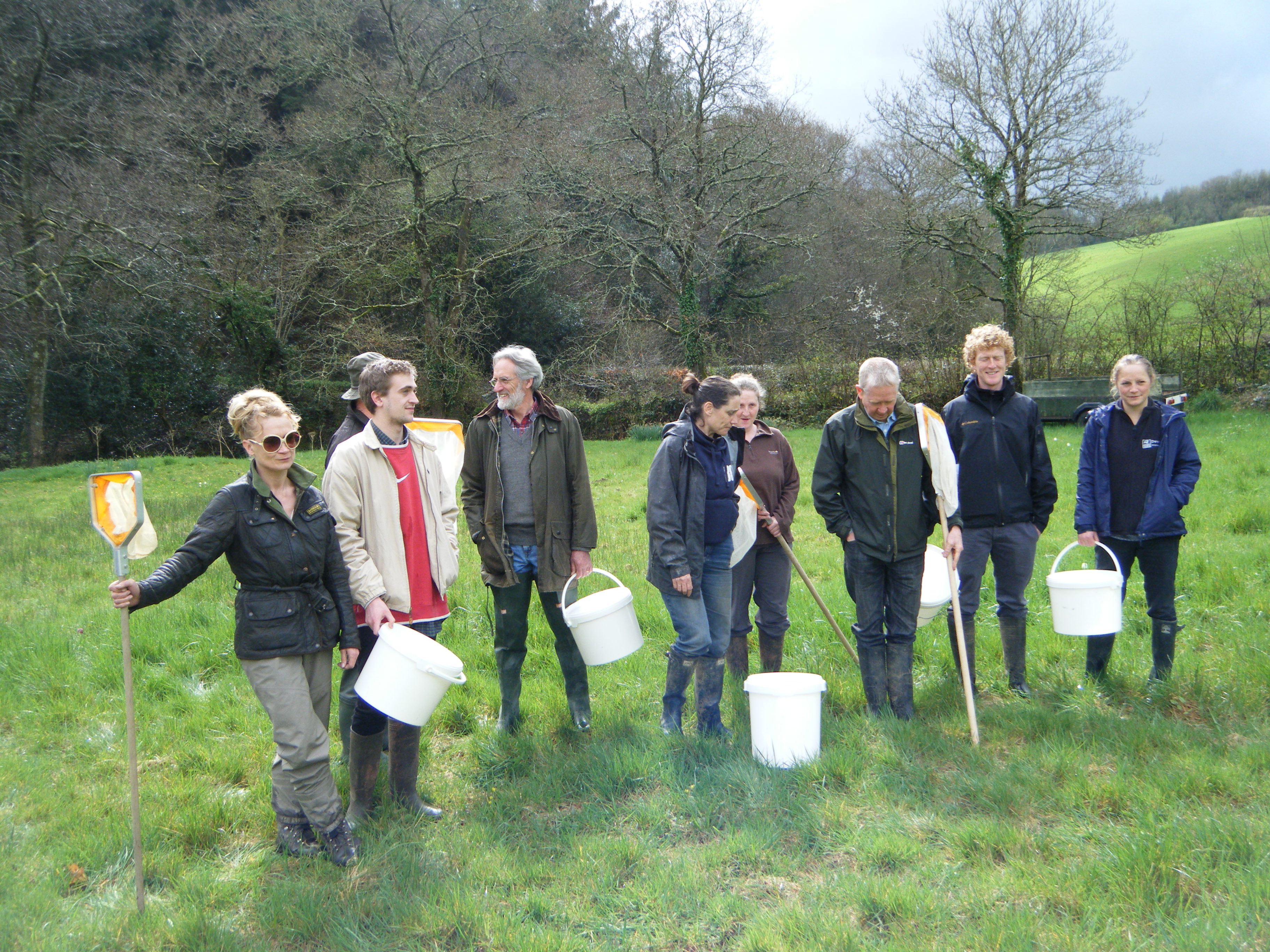
River Torridge
2017 update
The last Riverfly sampling for 2017 was done by the Torridge volunteers in October. Despite the difficulties accessing some stretches due to poor weather towards the end of the season, during the year, 103 samples were collected from 25 active sites. 3 new volunteers were trained up at the start of the season and 4 already registered sites were taken on by new volunteers, including Dymsdale Wood Bridge, Sutcombe Mill and Hatherleigh CC. Since Matt’s departure from the North Devon Biosphere in August, the Torridge Riverfly project has been taken on by Izzy Moser at Devon Wildlife Trust. Izzy can be contacted via email at [email protected].
Results
The data, which in some catchments has been collected for 4 years now, really shows either declining or improving river water quality across the Torridge catchment. Overall, the results show that 7 rivers have strongly improved since the start of Riverfly and 3 rivers have clearly declining water quality. Some patterns from tributaries are less clear with variable water quality throughout the survey period.
3 samples on two different tributaries; the Dipple Water and the Pulworthy Brook, failed their trigger level. The trigger level breach on the Pulworthy Brook which was reported in August was given an Environment Agency reference number. The stream has been assessed in previous years and is known to suffer from chronic low flow stress. The river was otherwise reported as healthy by the volunteer and additional surveys were not required.
The trigger level breach which occurred in the Dipple Water has also been investigated by Michael Thomas following previous trigger level breaches and is under investigation from known upstream impacts by Andrew Fuller, the local Environment Officer. Andrew carried out a site check shortly after the trigger level breach and investigations upstream are being carried out. The stream also suffers from low flow stress. For the full data, please see the separate PDF included with this document.
Riverfly Report 2017
River Torridge Results since 2014
Looking at the Riverfly programme as a whole since it began on the Torridge in 2014,
sites, please contact Izzy Moser at Devon Wildlife Trust via [email protected].
River Taw
2017 update
After the Riverfly training event on the 1st April, it was a little slow getting some sites registered and data collected, but by the end of the season, a total of 5 new sites were registered and 17 samples were collected. 5 sites are registered but currently inactive (table 4). Again, with the poor weather towards the end of the season, opportunities for collecting samples were limited. Since Matt’s departure from the North Devon Biosphere in August, the Taw Riverfly project has been taken on by Olivia Cresswell at Westcountry Rivers Trust. Olivia can be contacted via email at [email protected].
Results
There are now a total of 6 sites registered in the Taw catchment. Thankfully, none of the surveys delivered in 2017 breached the trigger level set by the Environment Agency, although 4 samples were near the trigger level. Data trends for catchments with more samples collected are starting to show, although additional data is required to show any long term changes in improving or declining water quality. For the full data, please see the separate PDF included with this document.
River Taw Results since 2016
Looking at the Riverfly programme as a whole since it began on the Taw in 2016,
20 samples have been taken
6 sites have been sampled
0 samples have fallen below trigger levels
4 sites are registered but currently inactive at the end of 2017.
Riverfly Schools Update
Riverfly schools ran again in 2017, delivered by Izzy Moser at Devon Wildlife Trust. The event involved 31 children from Bradworthy Class 6 surveying to identify Riverfly invertebrates as a method of detecting river health. A thank you to Bob Shepard who volunteered to help during the day.
Since Riverfly schools started in 2015, a total of 83 children have engaged with the event which is held at Julian’s Farm near Bradworthy. Unfortunately several events had to be postponed due to poor weather conditions.
6
Riverfly Report 2017
Riverfly Events have also been held at Hatherleigh Primary School and at the annual Hatherleigh Fair, delivered by Elizabeth Durrant (River Lew Riverfly Volunteer).
Professor Sir John Lawton Visit
In 2016 Professor Sir John Lawton, former head of the Natural Environment Research Council and President of the Institution of Environmental Sciences, visited the River Torridge Nature Improvement Area. As part of that he travelled to a Riverfly site, closely monitored by Gordon Murray during an invertebrate survey, to discuss the importance of Riverfly monitoring in the Torridge catchment. It was Sir Lawton’s Report entitled ‘Making Space for Nature’ which led to the development of Nature Improvement Areas, of which the Torridge catchment was one of 12 in England.
7
Riverfly Report 2017
Freshwater Pearl Mussel Project Update 2017

This summer, the project achieved an exciting milestone. Thanks to our expert advisors from Ireland, we were able to confirm live juveniles mussels for the first time in over 50 years. The juvenile mussels which had previously encysted on brown trout dropped off at our captive rearing facility in North Devon. This enabled us to collect and return them to the River Torridge in specially selected locations. The captive breeding programme is currently in its second year, and during October 2017, the project was able to confirm a second year of successful glochidia (larvae) attachment on host fish.
This programme of work is part of the national ‘Restoring Freshwater Mussel Rivers in England’ funded by Biffa Award and co-ordinated by the Freshwater Biological Association. It is the first to trial this short- term breeding method in England.
Along with the captive breeding programme, the project delivers an array of measures to improve local water quality including tree planting, riverbank erosion management, tree coppicing, watercourse fencing, forestry track improvements, farm yard improvements, farm advice and workshops.
The River Fly Partnership
“Riverfly Partnership tutors deliver one-day workshops to fishing clubs and other organisations committed to establishing a group to monitor the biological water quality of their local waters.
Anglers are natural guardians of the river environment, and are in an ideal position to monitor the health of the watercourses they fish, by using the riverflies they aim to imitate with their artificial flies. Many angling and other interested groups expressed an interest to be able to carry out health checks on their waters. The Riverfly Partnership spearheads an initiative to allow interested groups to take action that will help conserve the river environment. This initiative provides a simple monitoring technique which groups can use to detect any severe perturbations in river water quality and puts them in direct communication with the local Ecological Contact of the Environment Agency (EA) / Scottish Environment Protection Agency – participating areas (SEPA) / National Resources Wales (NRW) / Northern Ireland Environment Agency (NIEA). “
I joined a group of enthusiastic volunteers for a days training on the River Fly Initiative at The Fox and Hounds Country Hotel near Eggesford. The course was run in conjunction with the North Devon Biosphere and our tutor’s for the day were Matthew Edworthy from the North Devon Biospere and Izzy Moser from the Devon Wildlife Trust.
The group of volunteers was a mix of anglers and members of the community with a passion for Devon’s wildlife. All understood the importance of a healthy river and how the river fly population can act as a natural barometer to its health. Fly Fishers of course have a long established link to a rivers fly life as it is these creatures that the anglers mimic when trying to tempt the trout that live within the river.
It was observations by anglers that had helped to establish the vital link between the abundance of fly life and the richness of the river habitat. Observations over many decades revealed an alarming decline in fly populations. It was this that had lead to the River Fly Initiative.
The sampling of a section of river and careful gathering of data relating to fly life populations is a proven way of detecting any decline in the river health. This can show up problems long before any fish kill or visible signs of an issue.
The first part of the day was spent in the classroom where we were given a thought provoking briefing on health and safety and the risks we may encounter at the waters edge including the ever-present threat of Leptospirosis/Weils disease and lyme disease. We were then briefed on the identification of the fly groups we would be looking for within the river.
Caddisfly (sedge) larvae – Cased Caddis Caseless caddis
Up-wing fly larvae – Mayfly Ephemeridae , Blue-winged olive, Flat-bodied Heptageniidae, olive Baetidae
Stonefly Larvae Stone Flies
Freshwater Shrimp Gammarus
The life cycle of these river dwellers proved to be a fascinating insight into the rich variety of the life within our rivers and as an angler for close to fifty years I was somewhat dismayed at my lack of knowledge. Though this was one of the reasons I had enrolled on the course as knowledge of the river life enhances each day spent by the waters edge fishing.
The previous night had seen heavy rain fall over much of North Devon resulting in a brown and swollen River Taw. It seemed that our all-important practical session would be impacted upon but fortunately one of our party owned a delightful property with a small stream running through its meadow. After lunch we all tramped down to the river with our nets and buckets. Along the way we were delighted to see numerous rare snakehead fritillary flowers in the meadow.
It was refreshing to share in the joy of messing around in the river with a group of like-minded people. Whilst the exercise had a valuable purpose I could not help but remember childhood days spent exploring a babbling brook. My angling life began with this fascination for rivers and the life within.
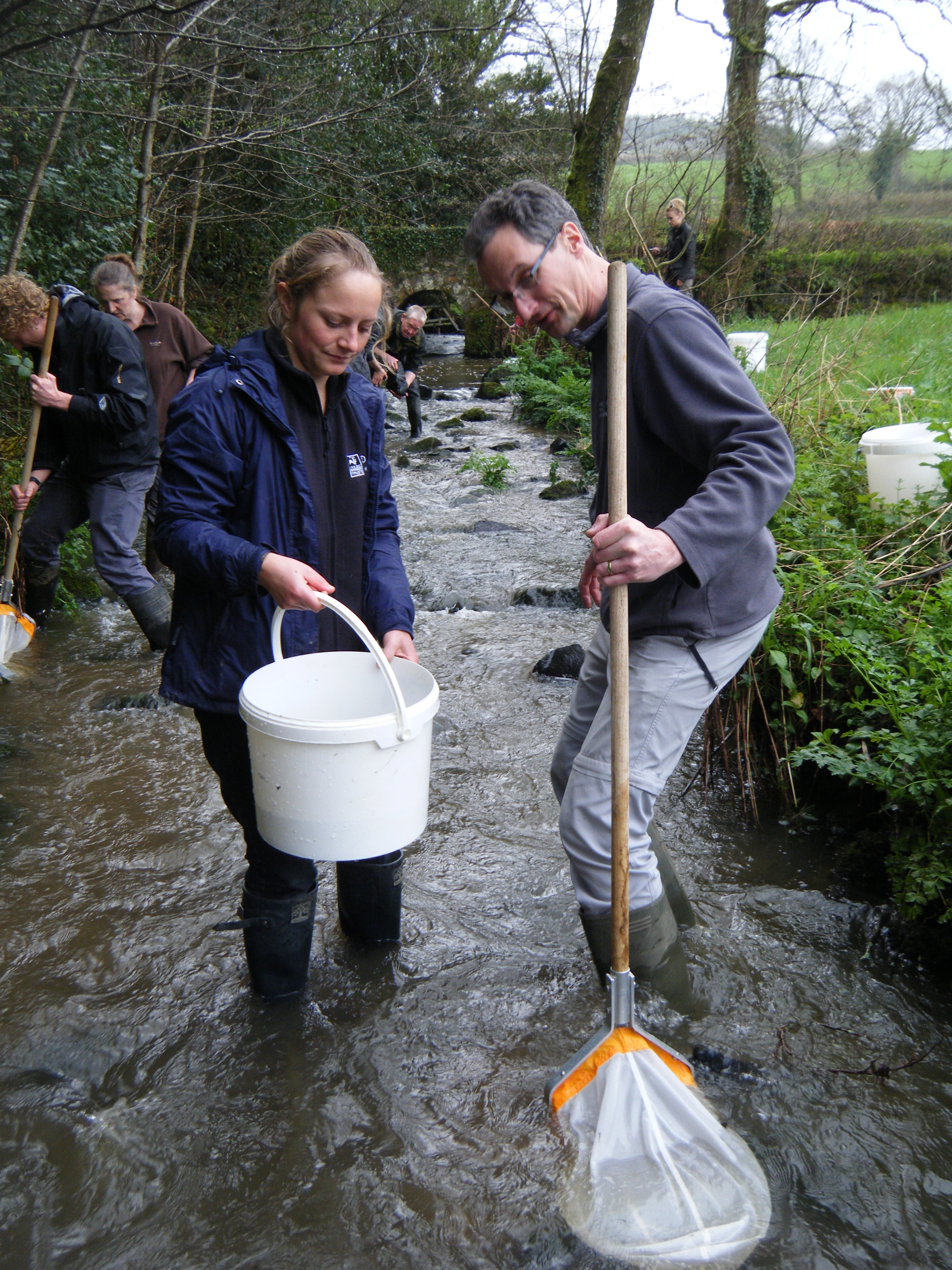
The sampling method involves 3 minutes of intense riverbed kicking and a minute of rock turning. This resulted in several buckets full of river life and detritus to take away and analyze.
To our delight it soon became apparent that we had struck upon a rich vein of river life with all our target species present in good numbers. Sorting the fly larvae into their respective groups proved a fascinating exercise and there were plenty of enthusiastic exclamations as various larvae were revealed.
We returned to the Fox and Hounds for a briefing on logging our data and how this vital information would be used by the Environment Agency to monitor river health. There is of course a political background to this citizen science for a significant reduction in funding means that those that care about the environment have to get out there and work for the protection of the riverside habitat. It is my belief that the rivers are the arteries of our green and pleasant land. As an angler I of course have an additional link to the river in that I cast my line into it in the hope of connecting with its fish.
http://www.riverflies.org/rp-riverfly-monitoring-initiative